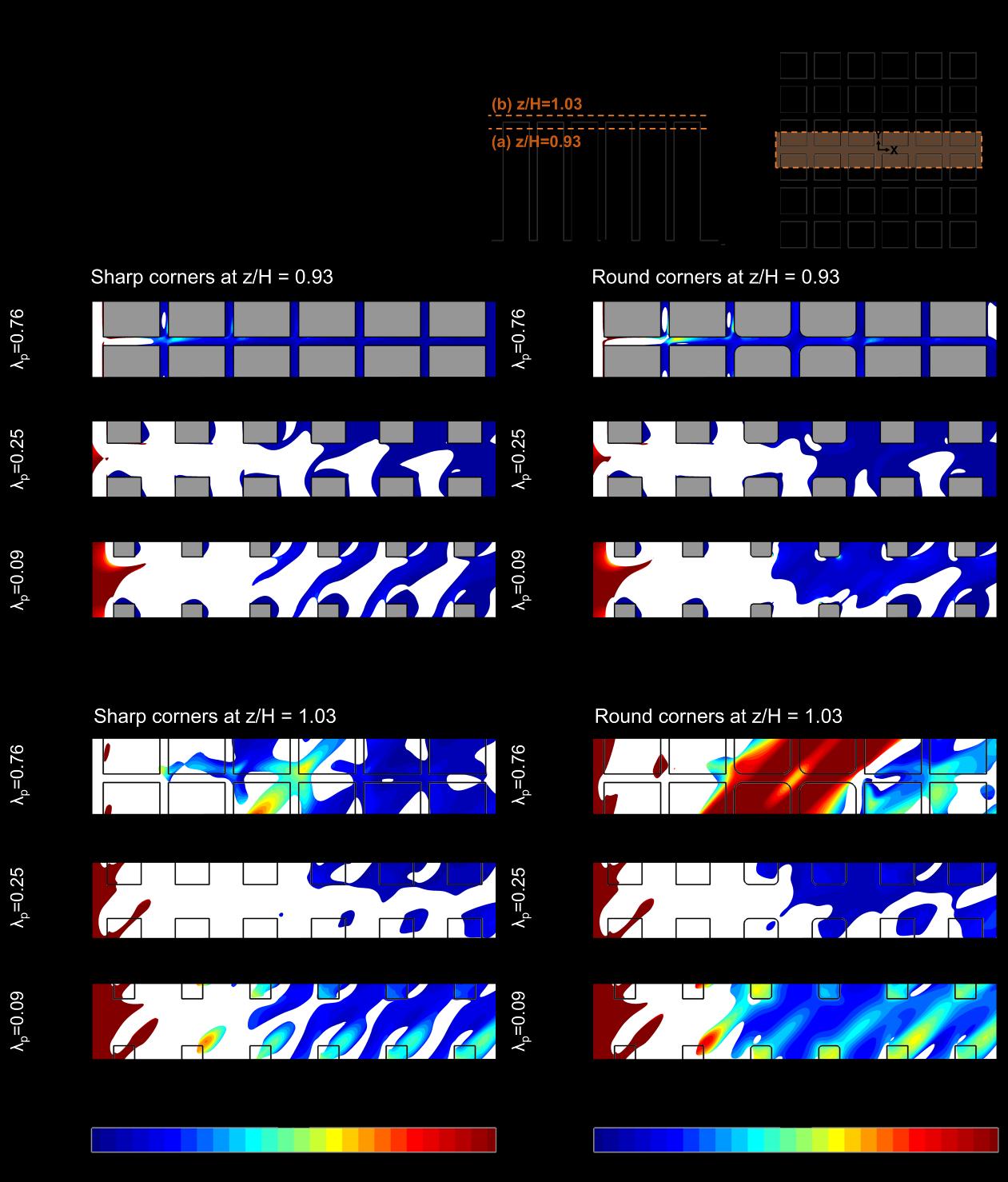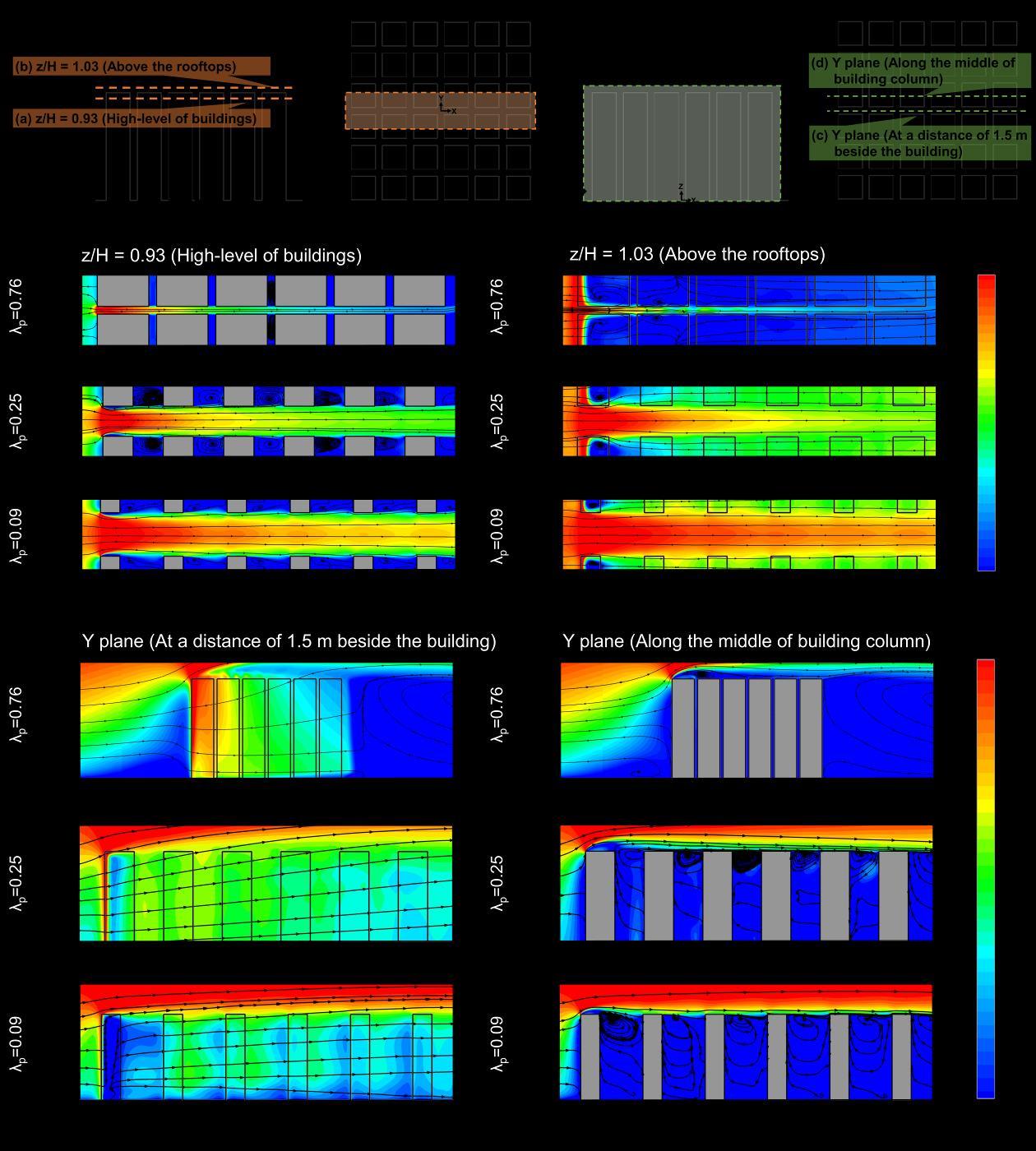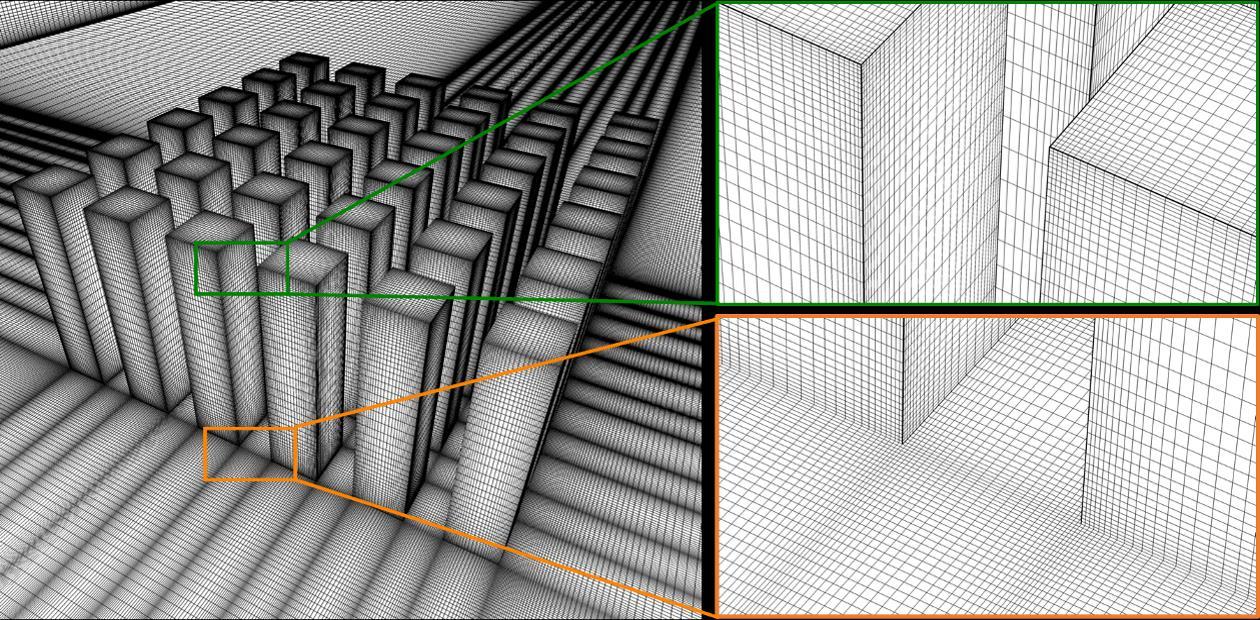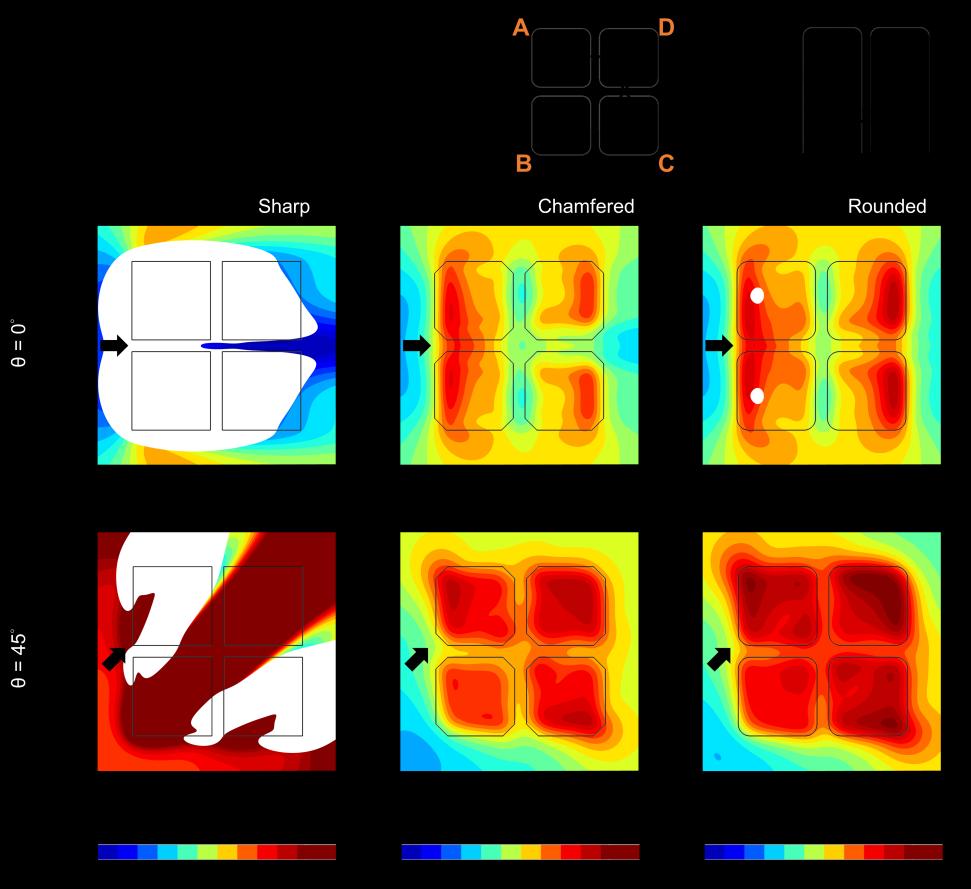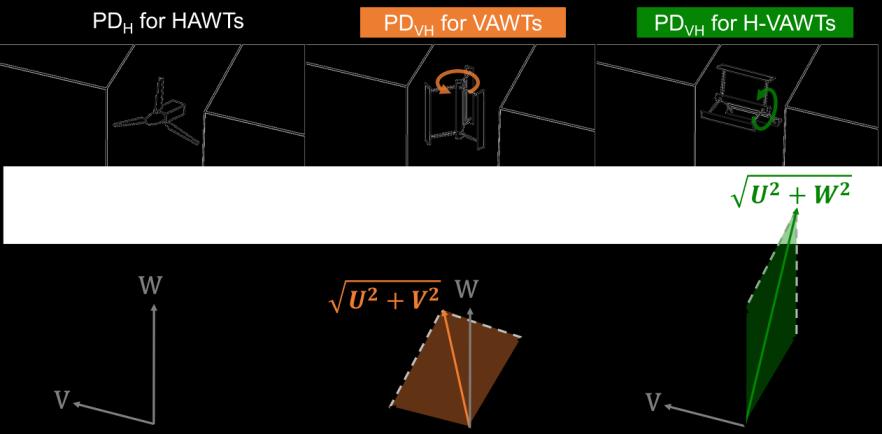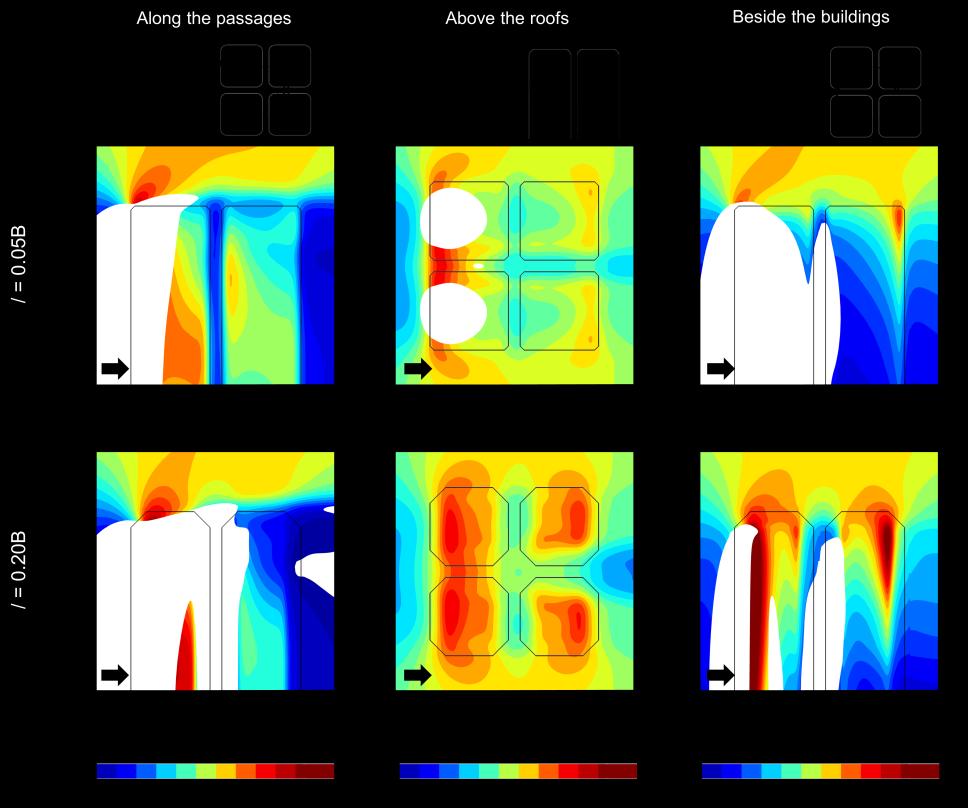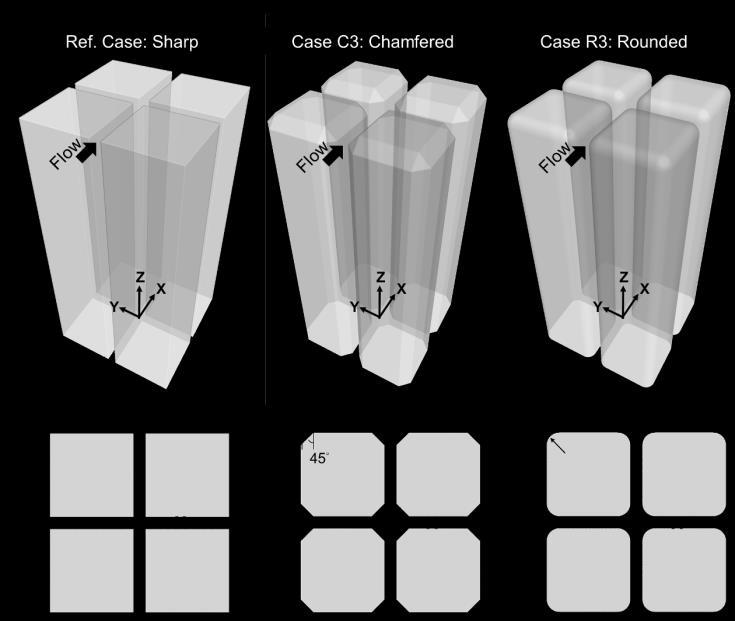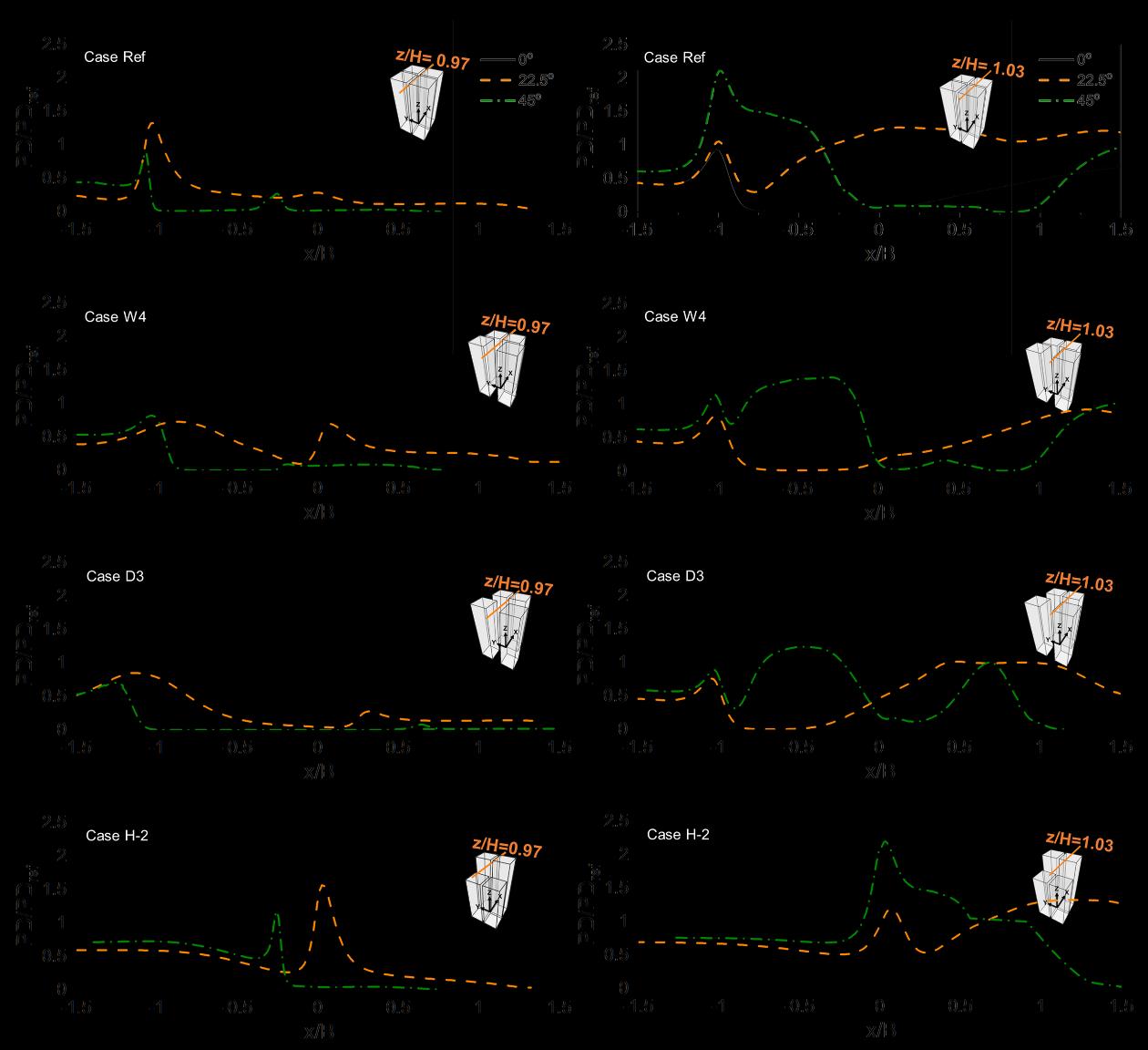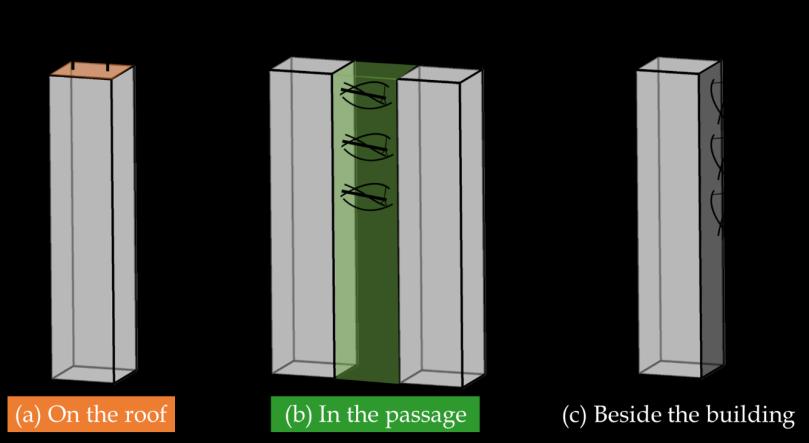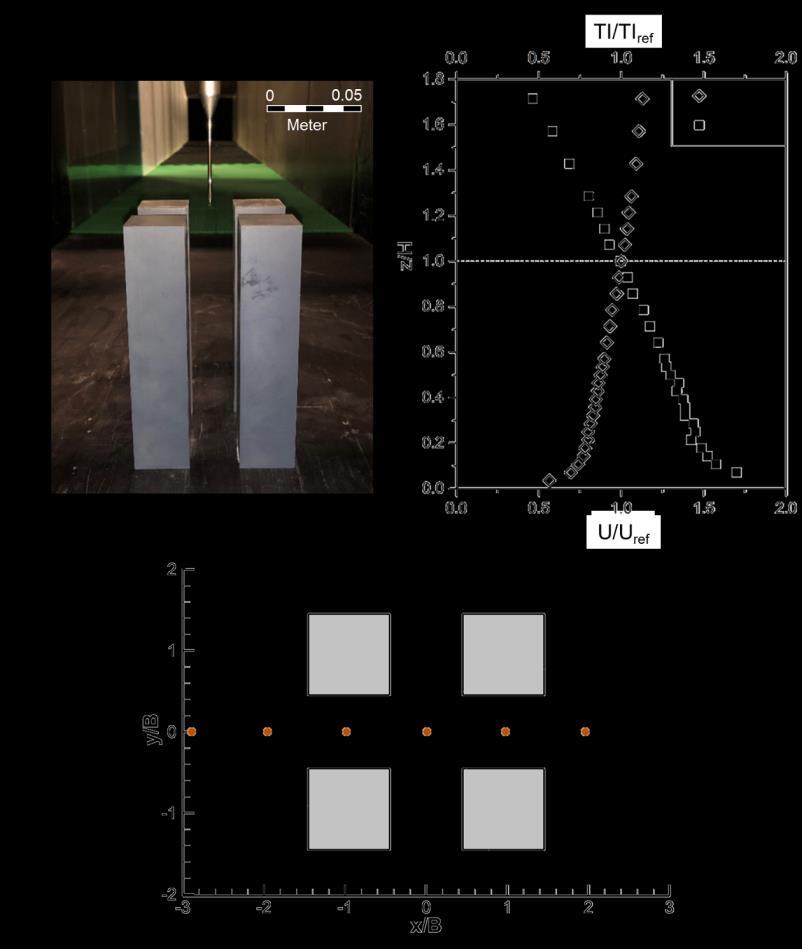Urban wind energy potential: Impacts of urban density and layout
91
Figure 4.17. Predicted contour plots of dimensionless power density (with unacceptable turbulence region marked in white color) over horizontal x-y planes at (a) z/H= 0.93 and (b) 1.03 with wind direction of 45° for sharp/round corners and urban layouts of λp = 0.09, 0.25, 0.76.
4.5
Discussion
As the world strives to develop the sustainable purposes of combating against climate change and providing renewable energy sources for all, it is crucial to investigate the feasibility and environmental effects of urban wind energy during their developmental stages. By 2050 it's projected that more than two-thirds of the world population will live in cities with denser and more compact urban layouts [155]. Hence, compact city planning has recently attracted much attention as one of the measures for sustainable urban development. As exponential growth of


